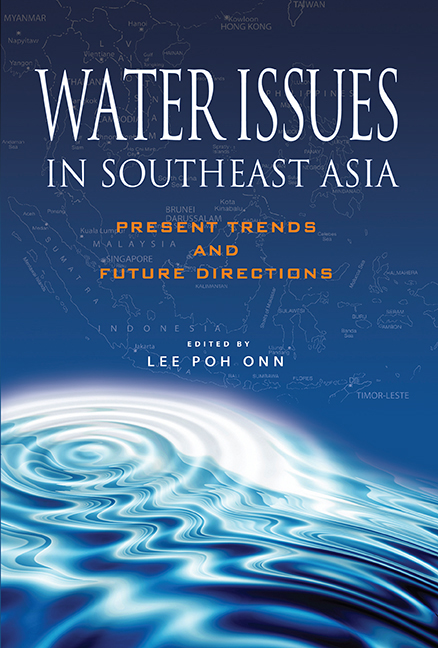Book contents
- Frontmatter
- Contents
- List of Tables, Figures, Boxes and Photos
- Acknowledgements
- About the Contributors
- CHAPTER 1 Introduction
- CHAPTER 2 China and the Potential for Conflict over Water among Eurasian States
- CHAPTER 3 River Basin Agreements as Facilitators of Development
- CHAPTER 4 Privatization of Water Services via Public-Private Partnership and Implications for Southeast Asia
- CHAPTER 5 Indonesia's Water Management Reform
- CHAPTER 6 Water Resource Management Issues in Malaysia
- CHAPTER 7 Privatization Issues in Water Supply in Malaysia
- CHAPTER 8 Troubled Waters: Rehabilitating the Pasig River, the Philippines
- CHAPTER 9 The Privatization of Water Services in Metro Manila: Lessons from a Mixed Outcome
- CHAPTER 10 Singapore's Experience in Water Resource Management
- CHAPTER 11 Thailand's Water Sector: Overview and Implications
- CHAPTER 12 Water Resources and Issues Concerning Sustainable Watershed Management Practices in Vietnam
- Index
CHAPTER 5 - Indonesia's Water Management Reform
Published online by Cambridge University Press: 21 October 2015
- Frontmatter
- Contents
- List of Tables, Figures, Boxes and Photos
- Acknowledgements
- About the Contributors
- CHAPTER 1 Introduction
- CHAPTER 2 China and the Potential for Conflict over Water among Eurasian States
- CHAPTER 3 River Basin Agreements as Facilitators of Development
- CHAPTER 4 Privatization of Water Services via Public-Private Partnership and Implications for Southeast Asia
- CHAPTER 5 Indonesia's Water Management Reform
- CHAPTER 6 Water Resource Management Issues in Malaysia
- CHAPTER 7 Privatization Issues in Water Supply in Malaysia
- CHAPTER 8 Troubled Waters: Rehabilitating the Pasig River, the Philippines
- CHAPTER 9 The Privatization of Water Services in Metro Manila: Lessons from a Mixed Outcome
- CHAPTER 10 Singapore's Experience in Water Resource Management
- CHAPTER 11 Thailand's Water Sector: Overview and Implications
- CHAPTER 12 Water Resources and Issues Concerning Sustainable Watershed Management Practices in Vietnam
- Index
Summary
The growing population and economic activities in various regions in Indonesia have caused an intensification of water use, thus increasing scarcity of available water resources, and intensified impacts from adverse conditions. This rising scarcity raises critical issues in the efficient allocation, distribution and control of water resources.
RIVER BASINS
The main problem faced by Indonesia is a deterioration of its river basins in many parts of the country. Damaged river basins are identified when the flow of water from upper to the lower level is now more rapid because of a higher run-off. Because of the higher run-off, less water can be absorbed in the catchment areas. The high run-off results in flooding in the downstream areas which often becomes unmanageable. Catchment areas become short and steep and groundwater recharge potential low. Without adequate containment structures, most wet season discharge flows quickly to the sea. Pollution, mainly from human and industrial wastes, is also serious in many rivers. The concentration of pollution increases dramatically during the dry season, when river flows are greatly reduced.
The water reform as stipulated in the 2004 water law states that in order to reduce damage in river basins, the government has to implement a new approach called “one river one management”. By this is meant that solving problems in the downstream areas should take into account forest conservation issues in the catchments areas. The number of river basins in a critical stage has almost doubled every ten years: There were 22 river basins deemed critical in 1984, 39 in 1992, and 59 river basins in 1998. It was reported that in January 2008, the number of critical river basins had increased to about 232.
According to Law No. 41 Year 1999 regarding Forestry, Article 18 states that the catchments areas of a river basin which functions as water absorption and conservation should consist of protection vegetation of at least 30 per cent of the total river basin area. Almost sixty river basins in Indonesia in 1998 can thus be considered to be in a critical condition because the conservation forest at the catchment areas have been severely damaged.
- Type
- Chapter
- Information
- Water Issues in Southeast AsiaPresent Trends and Future Direction, pp. 100 - 118Publisher: ISEAS–Yusof Ishak InstitutePrint publication year: 2012



